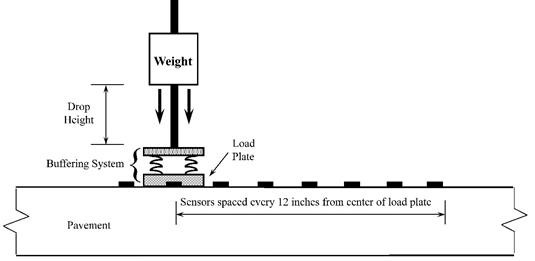
Evaluation of pavements is commonly conducted using the deflection data from Falling Weight Deflectometers (FWDs) tests. The reliability of these evaluations is highly dependent on the accuracy of the measured deflections. Therefore, to ensure the desired accuracy of measured deflections, FWDs undergo annual calibration and monthly relative calibrations. These calibrations are conducted according to AASHTO R32-11. The calibration tests are conducted on an indoor test pit made of a concrete slab underlaid by a base and a soft subgrade.
The calibration facility operated by the Montana Department of Transportation (MDT) has used a 12 ft wide, 15 ft long, and 5 in thick slab overlying a 6-in sandy base and a 4-ft thick clay subgrade (R32 design). The measured deflections during calibration tests conducted by MDT on this test pit met the deflection requirements laid out by AASHTO R32-11 for a few years, after which the test area needed to be replaced. Because rebuilding the test area is both costly and time-consuming, the MDT was interested in a new setup design that could operate over longer periods. The purpose of this study is to use dynamic response analyses to investigate the possibility of using geofoam instead of the clay layer in the test pit. If the results of the investigation revealed that geofoam can in fact be used, the next goal of this study will be to modify the preliminary alternative design and provide recommendations to improve the performance of the test area to where it meets the AASHTO R32-11 deflection requirements.
Final Report
Project Summary Report
Performance Measures Report
